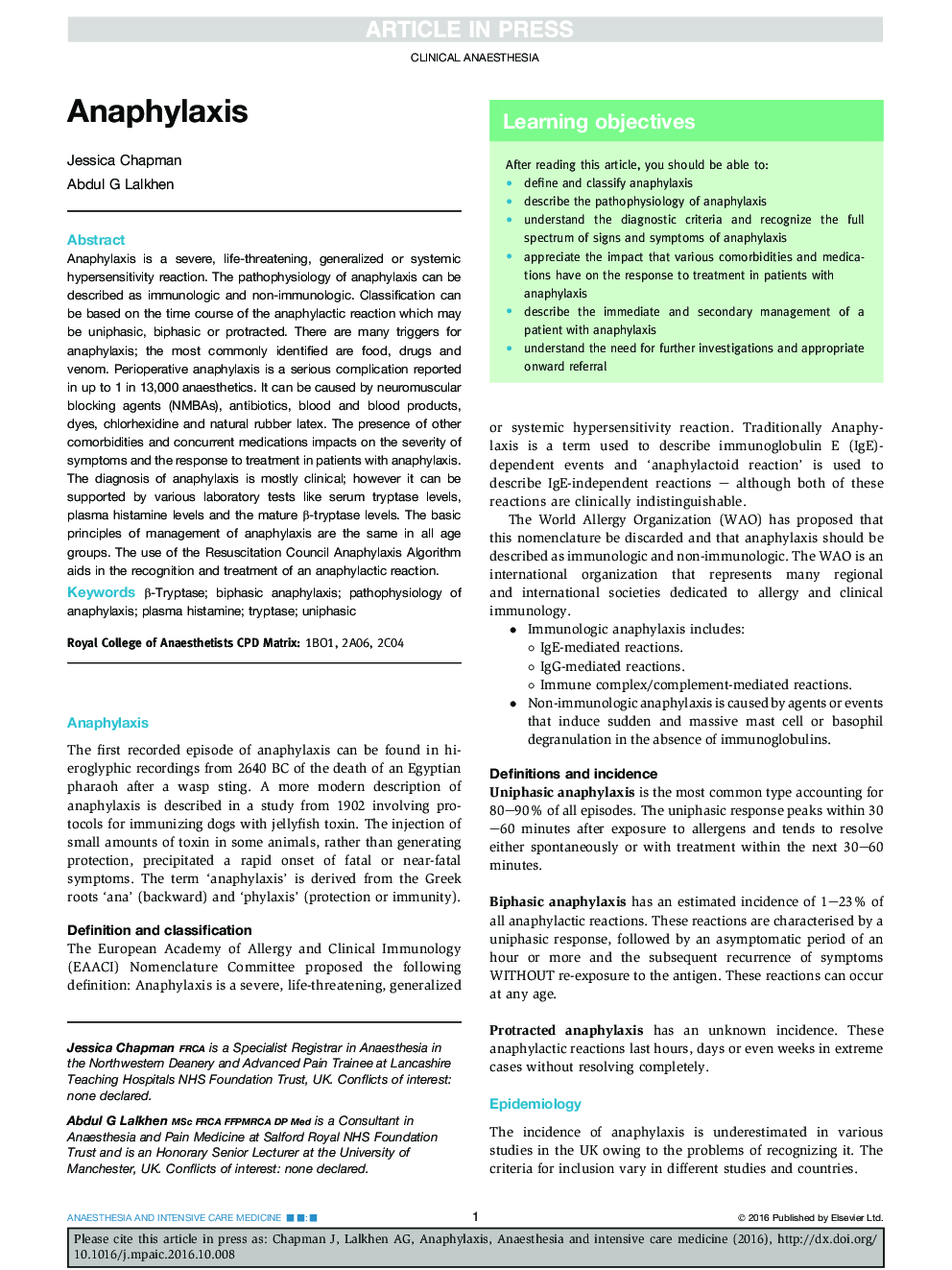| Article ID | Journal | Published Year | Pages | File Type |
|---|---|---|---|---|
| 5580362 | Anaesthesia & Intensive Care Medicine | 2017 | 6 Pages |
Abstract
Anaphylaxis is a severe, life-threatening, generalized or systemic hypersensitivity reaction. The pathophysiology of anaphylaxis can be described as immunologic and non-immunologic. Classification can be based on the time course of the anaphylactic reaction which may be uniphasic, biphasic or protracted. There are many triggers for anaphylaxis; the most commonly identified are food, drugs and venom. Perioperative anaphylaxis is a serious complication reported in up to 1 in 13,000 anaesthetics. It can be caused by neuromuscular blocking agents (NMBAs), antibiotics, blood and blood products, dyes, chlorhexidine and natural rubber latex. The presence of other comorbidities and concurrent medications impacts on the severity of symptoms and the response to treatment in patients with anaphylaxis. The diagnosis of anaphylaxis is mostly clinical; however it can be supported by various laboratory tests like serum tryptase levels, plasma histamine levels and the mature β-tryptase levels. The basic principles of management of anaphylaxis are the same in all age groups. The use of the Resuscitation Council Anaphylaxis Algorithm aids in the recognition and treatment of an anaphylactic reaction.
Keywords
Related Topics
Health Sciences
Medicine and Dentistry
Anesthesiology and Pain Medicine
Authors
Jessica Chapman, Abdul G. Lalkhen,
